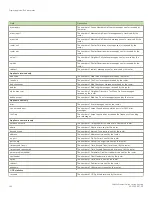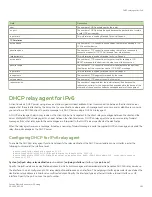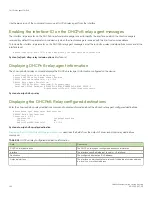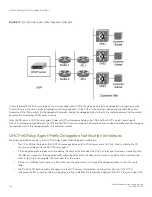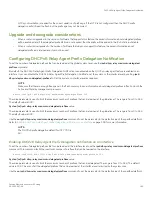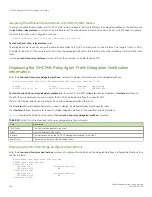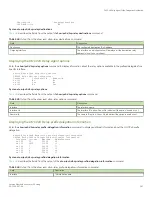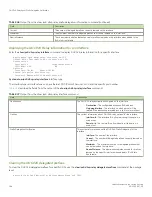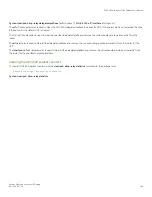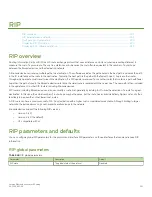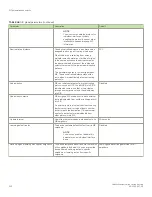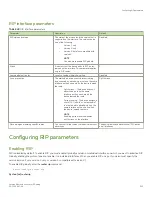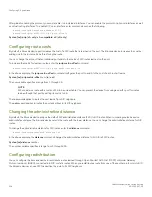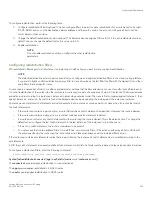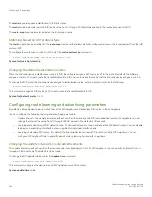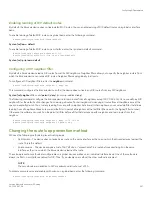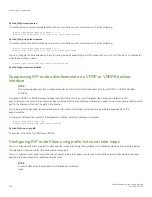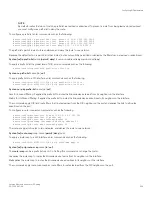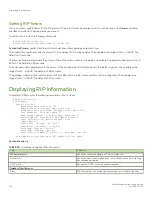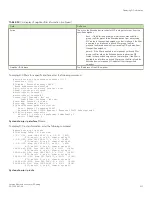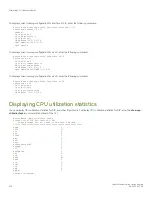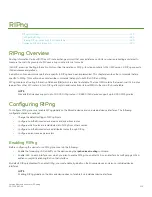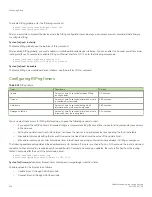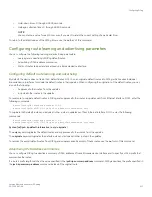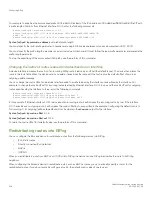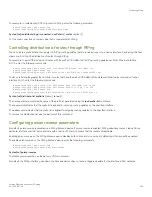
After globally enabling the protocol, you must enable it on individual interfaces. You can enable the protocol on physical interfaces as well
as virtual routing interfaces. To enable RIP on an interface, enter commands such as the following.
device(config)# interface ethernet 1/1/1
device(config-if-e1000-1/1/1)# ip rip v1-only
Syntax:
[no] ip rip
{
v1-only
|
v1-compatible-v2
|
v2-only
}
Configuring route costs
By default, a Brocade device port increases the cost of a RIP route that is learned on the port. The Brocade device increases the cost by
adding one to the route metric before storing the route.
You can change the amount that an individual port adds to the metric of RIP routes learned on the port.
To increase the metric for learned routes, enter the
ip rip metric-offset
command.
device(config-if-e1000-1/1/1)# ip rip metric-offset 5 in
In the above example, the
ip rip metric-offset
command configures the port to add 5 to the cost of each route it learns.
Syntax:
[no] ip rip metric-offset
num
{
in
|
out
}
The
num
variable specifies a range from 1 through 16.
NOTE
RIP considers a route with a metric of 16 to be unreachable. You can prevent the device from using a specific port for routes
learned though that port by setting its metric to 16.
The
in
keyword applies to routes the port learns from RIP neighbors.
The
out
keyword applies to routes the port advertises to its RIP neighbors.
Changing the administrative distance
By default, the Brocade device assigns the default RIP administrative distance (120) to RIP routes. When comparing routes based on
administrative distance, the Brocade device selects the route with the lower distance. You can change the administrative distance for RIP
routes.
To change the administrative distance for RIP routes, enter the
distance
command.
device(config-rip-router)# distance 140
In the above example, the
distance
command changes the administrative distance to 140 for all RIP routes.
Syntax:
[no] distance
number
The
number
variable specifies a range from 1 through 255.
Configuring redistribution
You can configure the Brocade device to redistribute routes learned through Open Shortest Path First (OSPF) or Border Gateway
Protocol version 4 (BGP4), connected into RIP, or static routes. When you redistribute a route from one of these other protocols into RIP,
the Brocade device can use RIP to advertise the route to its RIP neighbors.
Configuring RIP parameters
FastIron Ethernet Switch Layer 3 Routing
204
53-1003627-04
Summary of Contents for FastIron SX 1600
Page 2: ...FastIron Ethernet Switch Layer 3 Routing 2 53 1003627 04 ...
Page 16: ...FastIron Ethernet Switch Layer 3 Routing 16 53 1003627 04 ...
Page 20: ...FastIron Ethernet Switch Layer 3 Routing 20 53 1003627 04 ...
Page 142: ...FastIron Ethernet Switch Layer 3 Routing 142 53 1003627 04 ...
Page 150: ...FastIron Ethernet Switch Layer 3 Routing 150 53 1003627 04 ...
Page 200: ...FastIron Ethernet Switch Layer 3 Routing 200 53 1003627 04 ...
Page 214: ...FastIron Ethernet Switch Layer 3 Routing 214 53 1003627 04 ...
Page 350: ...FastIron Ethernet Switch Layer 3 Routing 350 53 1003627 04 ...
Page 476: ...FastIron Ethernet Switch Layer 3 Routing 476 53 1003627 04 ...
Page 588: ...FastIron Ethernet Switch Layer 3 Routing 588 53 1003627 04 ...

